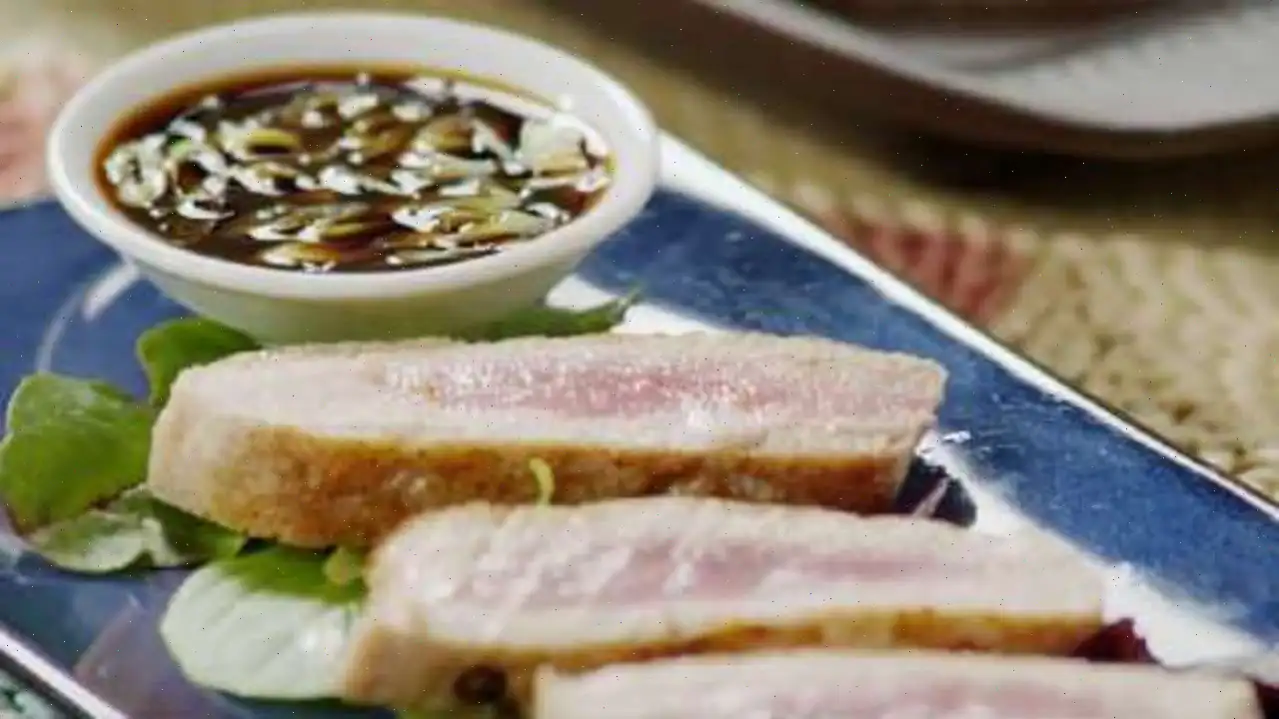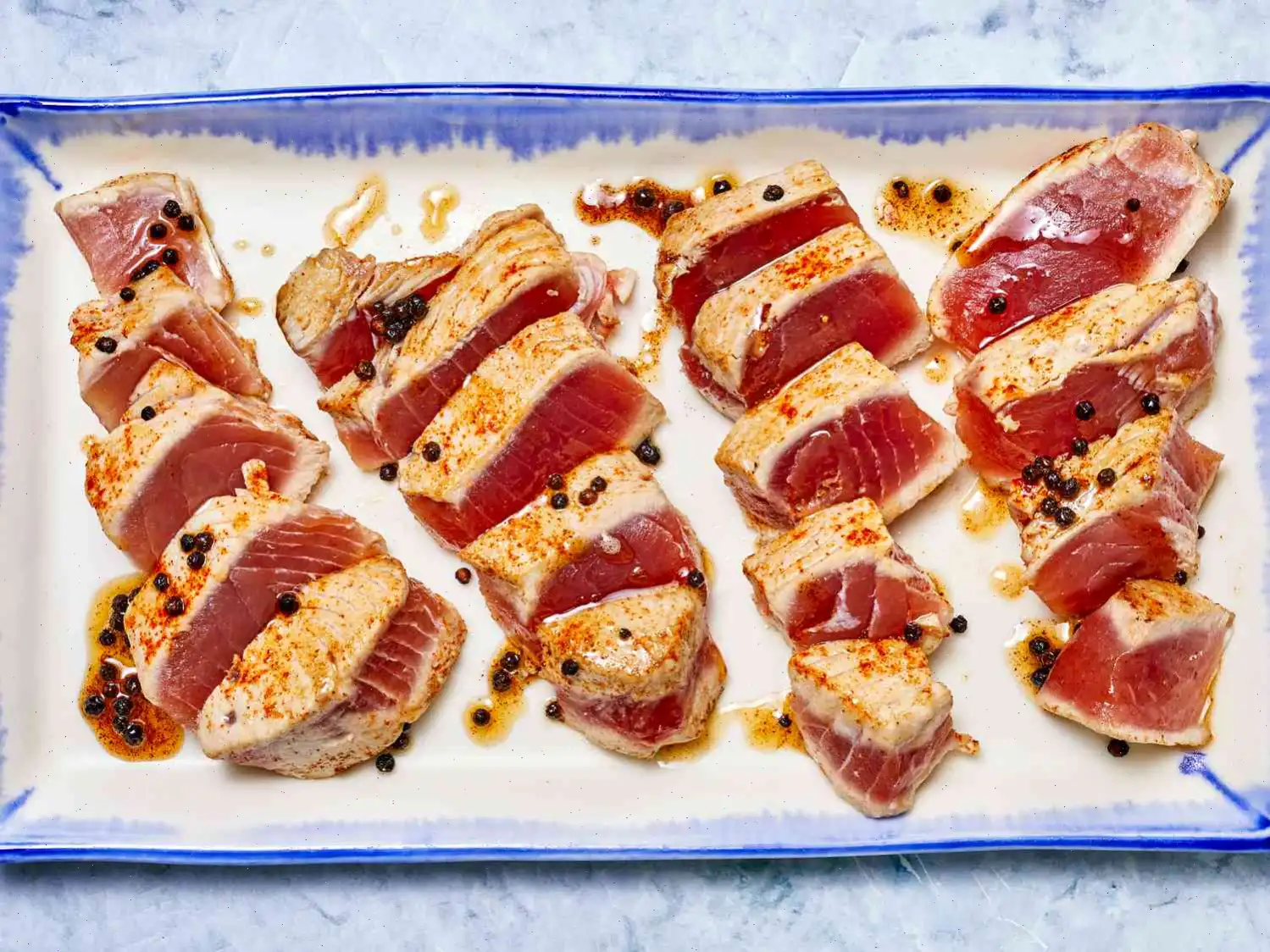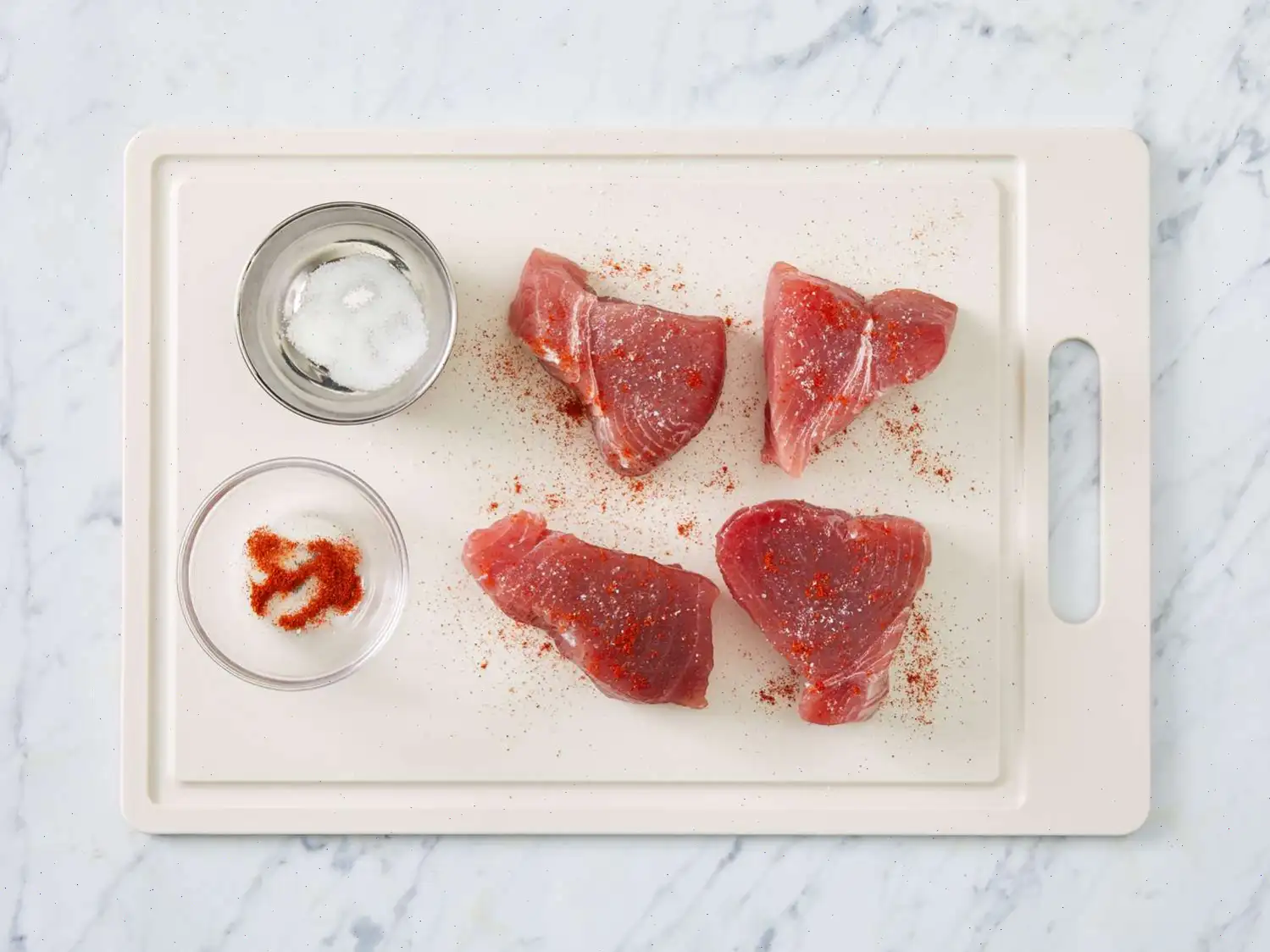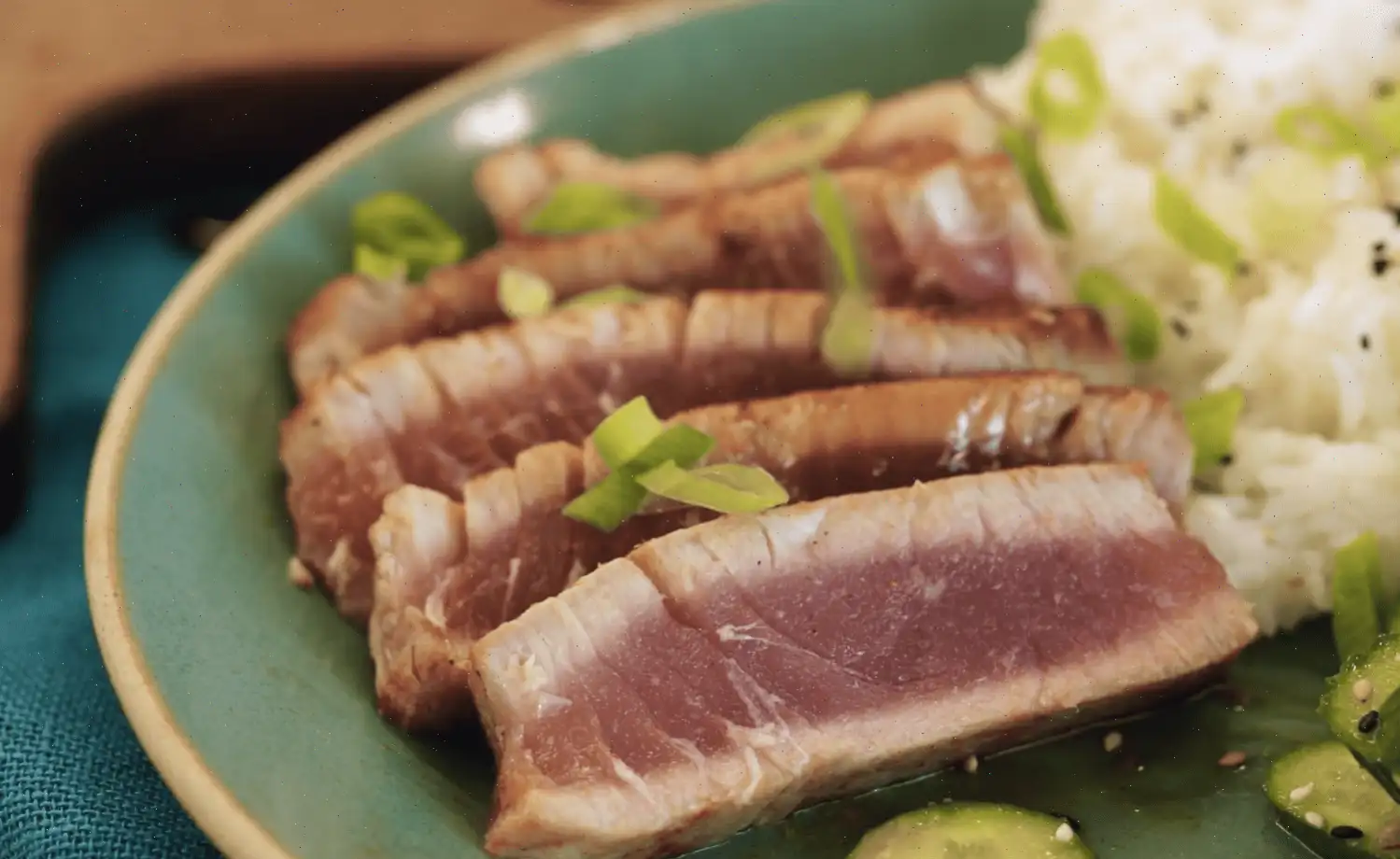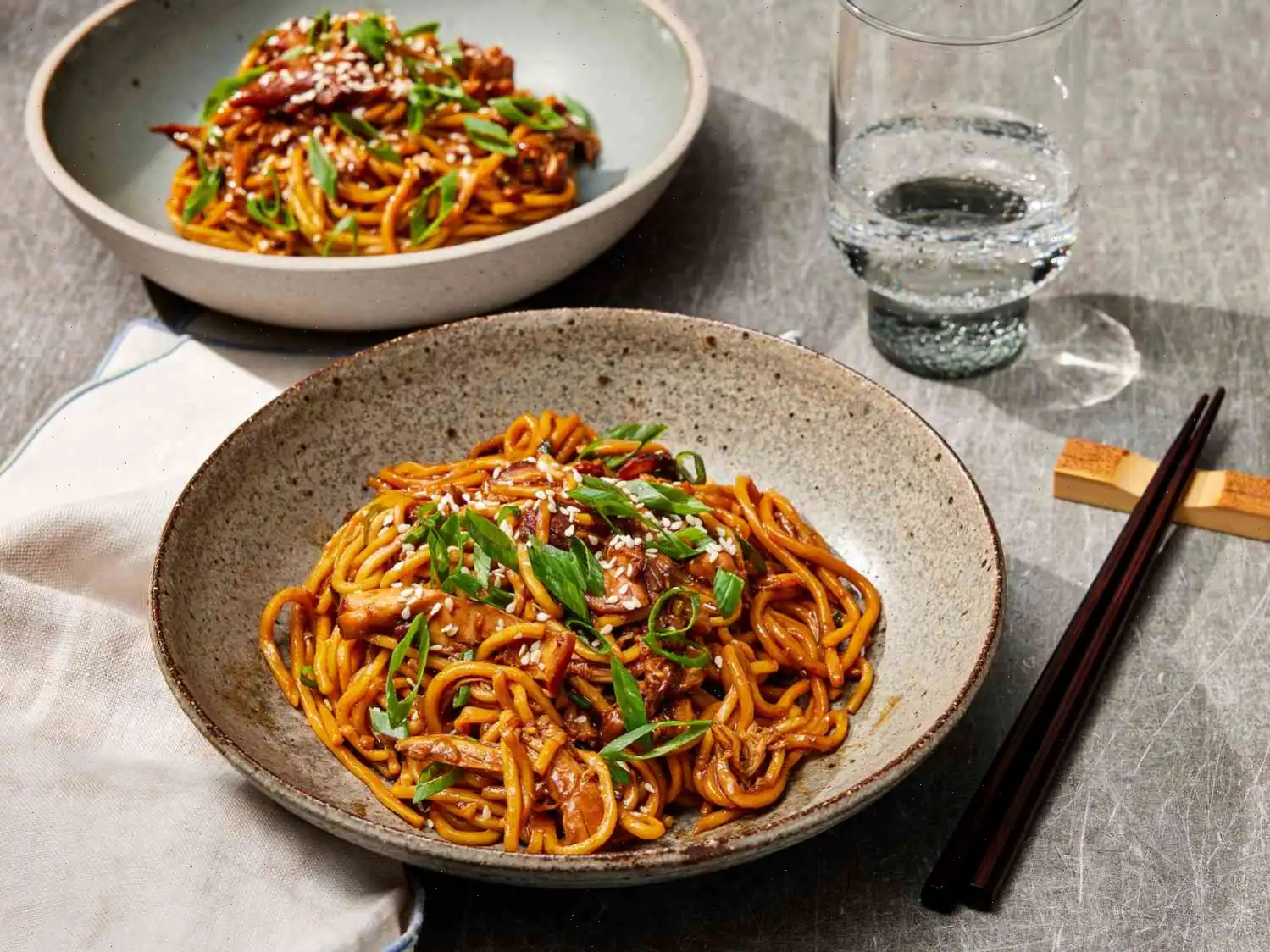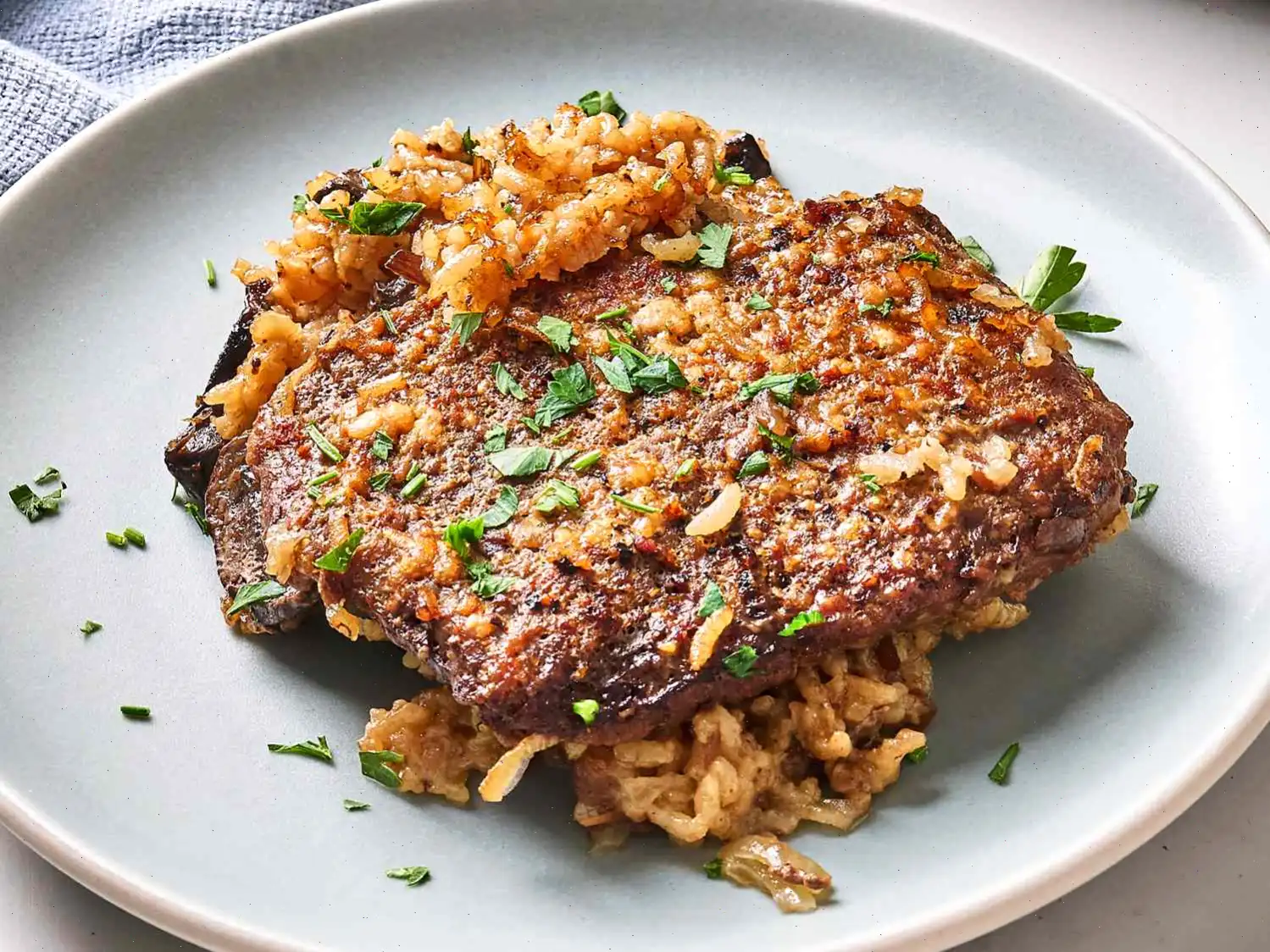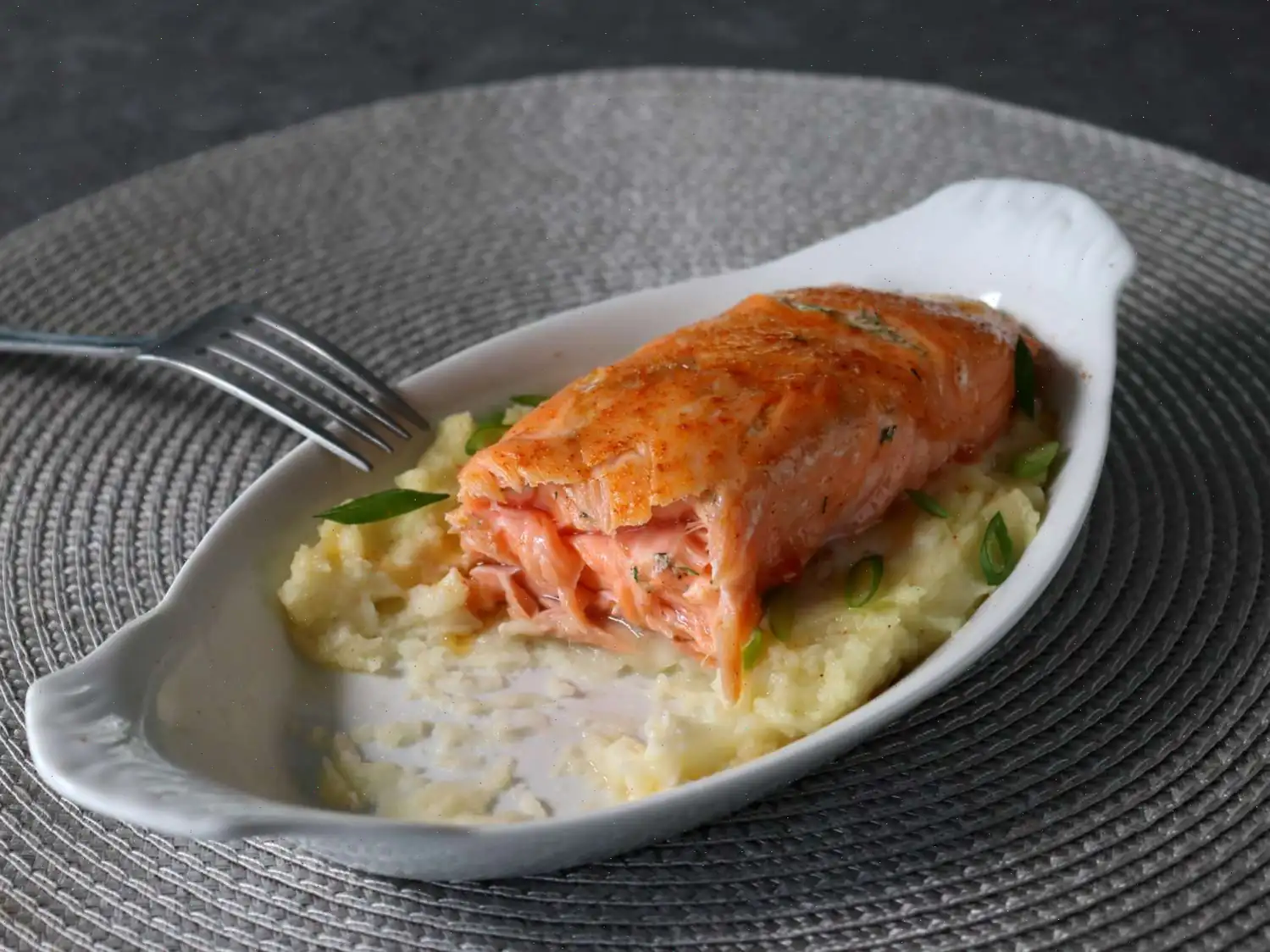
Seared Ahi Tuna Steaks Recipe
There's no need to head to a fancy seafood restaurant to enjoy a perfect ahi tuna steak. This simple, top-rated recipe allows you to make a delicious ahi tuna steak in just seven minutes, with minimal effort.
How to Buy Ahi Tuna
When purchasing ahi tuna, youll come across two varieties: bigeye tuna and yellowfin tuna. Bigeye has a buttery flavor, while yellowfin is milder. Either of these types works well for this recipe.
Make sure to buy sashimi-grade or sushi-grade tuna if you're planning to eat it raw. This ensures that the tuna is safe for raw consumption, as certified by the fish market.
How to Make Ahi Tuna Steak
Ahi tuna steaks are incredibly easy to prepare. The key is to lightly sear them for about one minute on each side, keeping the center raw or medium-rare. Since ahi tuna has a mild flavor, season it generously with salt and cayenne pepper before cooking. You can also enhance the flavor with sauces like teriyaki, soy, or orange sauce if you prefer.
How to Cook Ahi Tuna Steaks
There are several ways to cook ahi tuna steaks, but the most popular methods are pan-searing, grilling, and baking.
- Skillet: This is the preferred method because it creates a crispy crust while keeping the inside rare. Heat a skillet over medium-high heat and melt butter. Add olive oil and peppercorns, then cook for 30 seconds to 1.5 minutes per side, depending on your desired level of doneness.
- Grill: Preheat the grill to high heat. Season the tuna and place it on the grill, cooking each side for about 2 minutes. The exterior should be charred while the center remains raw.
- Oven: Preheat your oven to 450F (232C) and bake the seasoned tuna steaks for 8 to 10 minutes. You can flip the steaks halfway through, but it's not necessary.
- Air Fryer: Preheat the air fryer to 380F (193C) and air fry the tuna steaks for 4 minutes, checking for doneness as you go.
Nicole's Best Ahi Tuna Tips
- Nicole McLaughlin, a culinary expert, suggests keeping the seasoning simple with just salt and cayenne pepper to allow the natural flavor of the tuna to shine.
- For a perfect sear, you need very high heat and a dry surface. Pat the tuna steaks with a paper towel before cooking to remove excess moisture.
- Since oil has a higher smoke point than butter, it's ideal for searing. However, adding a little butter to the pan can enhance the flavor of the tuna.
Can You Freeze Ahi Tuna Steaks?
Yes, you can freeze both raw and cooked ahi tuna steaks. For raw tuna, wrap it tightly in plastic wrap, then aluminum foil, or place it in a zip-top bag before freezing. It will keep for up to 3 months. However, once thawed, it should not be refrozen.
For cooked tuna, place leftovers in an airtight or wrap in aluminum foil and store in a zip-top bag. You can freeze it for 2 to 3 months.
Community Tips and Praise
"Quick, easy, and delicious! I served the tuna steaks with a mango, cucumber salsa and grilled sweet corn. The sweetness of the corn and the citrus from the salsa balanced the tuna's flavors perfectly," says one happy reviewer.
"This recipe is amazing. The tuna melts in your mouth when cooked as directed. The peppercorns add just the right amount of heat," raves another satisfied cook.
"I followed the recipe exactly and it turned out perfectly. I prefer pan-searing my tuna since it's easier to control the doneness compared to grilling. I'll definitely use this method again," shares another user.
Ingredients
- 2 (5 ounce) ahi tuna steaks
- 1 teaspoon kosher salt
- 1/4 teaspoon cayenne pepper (Optional)
- 1/2 tablespoon butter
- 2 tablespoons olive oil
- 1 teaspoon whole peppercorns
Directions
- Pat the tuna steaks dry with a paper towel. Season both sides with salt and cayenne pepper.
- Heat a skillet over medium-high heat and melt the butter. Add the olive oil and peppercorns, cooking until the peppercorns soften and pop, about 5 minutes.
- Carefully place the seasoned tuna steaks in the skillet. Cook for 30 seconds to 1.5 minutes per side, depending on your desired doneness.
- Remove the steaks from the skillet and slice them into 1/4-inch thick pieces. Serve and enjoy!
Recipe Tip: If you prefer your tuna rare, be sure to use sushi-grade tuna for the best results.
Nutrition Facts (per serving)
- Calories: 301
- Total Fat: 18g (23% DV)
- Saturated Fat: 4g (20% DV)
- Cholesterol: 71mg (24% DV)
- Sodium: 1034mg (45% DV)
- Total Carbohydrate: 1g (0% DV)
- Dietary Fiber: 0g (1% DV)
- Protein: 33g (67% DV)
- Vitamin C: 2mg (2% DV)
- Calcium: 28mg (2% DV)
- Iron: 1mg (8% DV)
- Potassium: 645mg (14% DV)

Origin and History
Seared Ahi Tuna is a dish that draws its roots from the traditional cuisine of the Pacific Islands, particularly Hawaii. The word "Ahi" refers to the yellowfin tuna (Thunnus albacares), which is found in the warm waters of the Pacific Ocean. Tuna has been a staple in the diet of native Pacific Islanders for centuries, prized for its firm texture and mild flavor. However, the method of searing the tuna and serving it rare, often seen in modern presentations, became popular through Western influence, particularly in California and the broader U.S. mainland, where sushi and sashimi culture was embraced. Today, Seared Ahi Tuna is synonymous with fine dining and a fusion of Japanese and American culinary techniques.
Regional Variations and Features
While the basic concept of Seared Ahi Tuna Steaks remains consistent, the preparation can vary depending on the region. In Hawaii, the tuna is often served alongside tropical fruits like mango or papaya, giving it a refreshing contrast. On the U.S. mainland, it's common to see this dish served with soy-based sauces, like teriyaki or wasabi, as well as a side of stir-fried vegetables or rice. In California, chefs often elevate the dish by incorporating sesame seeds or a light drizzle of citrus-based sauces to enhance the natural flavors of the tuna. In Japan, the tuna is typically served as sashimi or nigiri, though the seared version is also gaining popularity in modern fusion eateries.
Distinguishing from Similar Dishes
While Seared Ahi Tuna shares similarities with other tuna dishes, such as tuna steaks or tuna tartare, it stands apart due to its unique preparation. Unlike grilled tuna steaks, which can often become dry, Ahi Tuna Steaks are seared on the outside while remaining raw and tender on the inside. This method is a hallmark of Japanese-inspired cooking, where the focus is on highlighting the fresh taste of the fish. Unlike tuna tartare, which is finely chopped and served raw, Seared Ahi Tuna is served as a whole steak that is lightly cooked. This creates a delightful contrast between the crisp exterior and the soft, rare interior.
Where It's Typically Served
Seared Ahi Tuna Steaks are typically served in upscale restaurants or sushi bars, often as part of a gourmet entree. In coastal areas, especially in places like Hawaii or California, you can find this dish in many seafood restaurants that specialize in fresh, local fish. It is also a popular choice for dinner parties or special occasions due to its elegant presentation and quick preparation. At many fine dining establishments, the tuna is often accompanied by a variety of sides, such as avocado, citrus salads, or pickled vegetables, making it a versatile and visually appealing dish.
Fun Facts About Ahi Tuna
- Ahi tuna is prized for its rich, meaty texture and is one of the most popular fish used in sushi and sashimi worldwide.
- The yellowfin tuna (Ahi) gets its name from the distinctive yellow coloring on its fins and tail, a feature that makes it easily recognizable.
- Due to the delicate nature of tuna, it is often labeled as "sashimi-grade" or "sushi-grade" when it meets the standards for being eaten raw. This ensures the tuna is fresh and safe for consumption.
- Tuna, particularly Ahi, is also a sustainable choice for seafood lovers, as long as it is sourced from responsible fisheries.
- Seared Ahi Tuna is incredibly quick to prepare the tuna is typically seared for just 30 seconds to 1 minutes per side, making it perfect for a fast, gourmet meal.
FAQ about Seared Ahi Tuna Steaks Recipe
Comments
Mushka
10/06/2025 01:52:54 PM
Absolutely wonderful! And my husband raved about it as well. I did have to cook the peppercorns a bit longer as mentioned in another review, but it was worth it. I'll make it again for company.
Kellee
11/01/2008 08:21:27 AM
This was very easy and tasty, however the entire house filled with smoke and I literally had to open all the windows and have my husband take our baby outside. Now I'm no cook, but I thought this was odd because I followed the directions exactly as they were written. Next time I will cook at a lower heat and forget about trying to pop the peppercorns, because this was when the oil began to burn and fill the house with smoke (and they never popped anyway).
lisandreasings
07/04/2023 06:27:20 PM
I was looking for quick-sear & simple: this met the bill. Tasty! My husband cannot do too much black pepper, so I reduced the peppercorns by 1/3 & added a little freshly grated dried garlic. Since there was so much butter/oil leftover, I removed the peppercorns, then went ahead & sautéed some button mushrooms in the oil @ medium heat, added more garlic + onion, & splashed with red wine in the end. One of our favorite mushroom recipes—with a new added heat! (Add to the side of wilted spinach)! Thx!
Sheryl Ludwig Franey
01/27/2020 04:50:51 PM
Very Good! Followed the advice of other reviewers and did not salt the tuna and only seared for 20-30 seconds. They were done they way my husband & I like them - Rare. Additionally, I would not sear the peppercorns unless you have a fantastic exhaust fan, as another reviewer stated the house became filled with smoke which could be very dangerous for anyone with asthma or respiratory issues. Next time I will eliminate that step & coat the outside to the tuna with course pepper instead.to get a blacked crust.
Allrecipes Member
08/05/2020 10:10:00 PM
took ChefJulianP excellent advice: less salt, don't salt until time to cook, add a little wine to the pan with the fish, cook 1.5 min on each side, remove fish and add a little more wine to pan to deglaze, pour over fish. Delicious! Will definitely make this again
Mike G
06/25/2021 06:28:25 PM
Make sure ur skillet is HOT!!! I ALSO added 1 tbl of sesame oil and 1 tbl of honey to the marinade for balance.... Cut the salt back to half a teaspoon and add half teaspoon of galric powder (fresh garlic will burn in the HOT pan)
Paula Savage
03/08/2020 01:51:06 AM
The first thing I noticed about this recipe, they had you searing the steaks in olive oil over high heat. Of course it is going to smoke! Use a high smoke oil like canola, peanut, sesame, grape seed, etc. I didn't have whole peppercorns so used coarse ground pepper, minimal amount of salt and heated cast iron skillet before adding butter and oil. Perfect!
Puako Sunset
01/16/2020 05:10:21 AM
As written, I gave this a 3 star rating. Like others, the butter and olive oil mixed smoked the place up with the peppercorns. I wouldn’t put the fish in it. Tossed the whole mess and started over, leaving out the peppercorns and instead just putting freshly ground pepper on the tuna. As modified this way, it was a 5 star rating.
Cally
06/11/2021 04:02:00 AM
Simple and fast! I didn’t use as much salt, just seasoned to my preference. The first time I tried this I put the butter and olive oil to cook the peppercorns but found that the butter burnt and made a black smokey mess. Cook the peppercorns in just the olive oil and add the butter when you’re ready to add the steaks seem to work out better for me. I cooked them for 1 minute and 30 seconds on each side and they came out perfect! Thanks for the recipe!
EJ_00
12/01/2020 04:28:06 PM
This is so easy and tasty. We like the peppercorn treatment so added a few more and didn't add the butter until we were just about to put the fish in to keep it from burning. We have a fennel rub we tried on the fish the 2nd time (gift we're trying to figure out how to use since we don't eat meat ) still using the salt/cayenne) and we'd use it again. This is definitely a keeper and will be the primary way we make tuna steaks going forward.
Kaseeno001
01/01/2021 08:34:53 PM
Excellent, easy, very tasty recipe. My husband said it was the best ahi tuna meal he ever had. I took comments from other reviewers and, 1) adjusted the salt to 2/3 the quantity), then 2) added the white wine and made the reduction... this brought the taste over a notch... Very gourmet! Thanks.
QuaintSage3322
04/14/2025 11:52:18 PM
I cooked it in my Air Fryer first - I DO Not recommend it that way - after I cooked it in the Air Fryer - I then transferred it to a skillet to try for a crust on it :\ I got a crust but by then it was no longer the Seared Tuna I had my heart set on - it was totally cooked but still good flavor wise
Kenneth Hall
01/27/2025 04:58:34 AM
This recipe = absolute hero status.
Paul
10/20/2024 09:41:11 PM
Wonderful flavor, almost like a grilled beef tenderloin.
QuickMelon2538
08/27/2024 12:54:57 AM
I prepared the Seared Ahi Tuna Steaks for my family and they thoroughly enjoyed every aspect of our meal.
sharonras
04/11/2024 10:48:51 PM
This is the best tuna I have ever made! Better than any restaurant I have eaten at. Make sure not to overcook the tuna!
James Collins
02/25/2024 04:49:43 PM
Can’t believe this came from my kitchen.
BriefChip7099
02/24/2024 02:37:43 AM
Cooked it in the air fryer and basted with teriyaki sauce and sesame seeds. Turned out very good.
rplummer
01/08/2024 10:51:11 PM
Worked out perfectly. My wife loved it.
Kmbtc S
11/18/2023 12:40:22 AM
Make this as written and always turns out great! I'm not a big fan of fish but this recipe is one of my favorites. Be sure to get good quality tuna and don't overcook. A quick sear on each side is all that's needed. The more you cook it the fishier it tastes.


